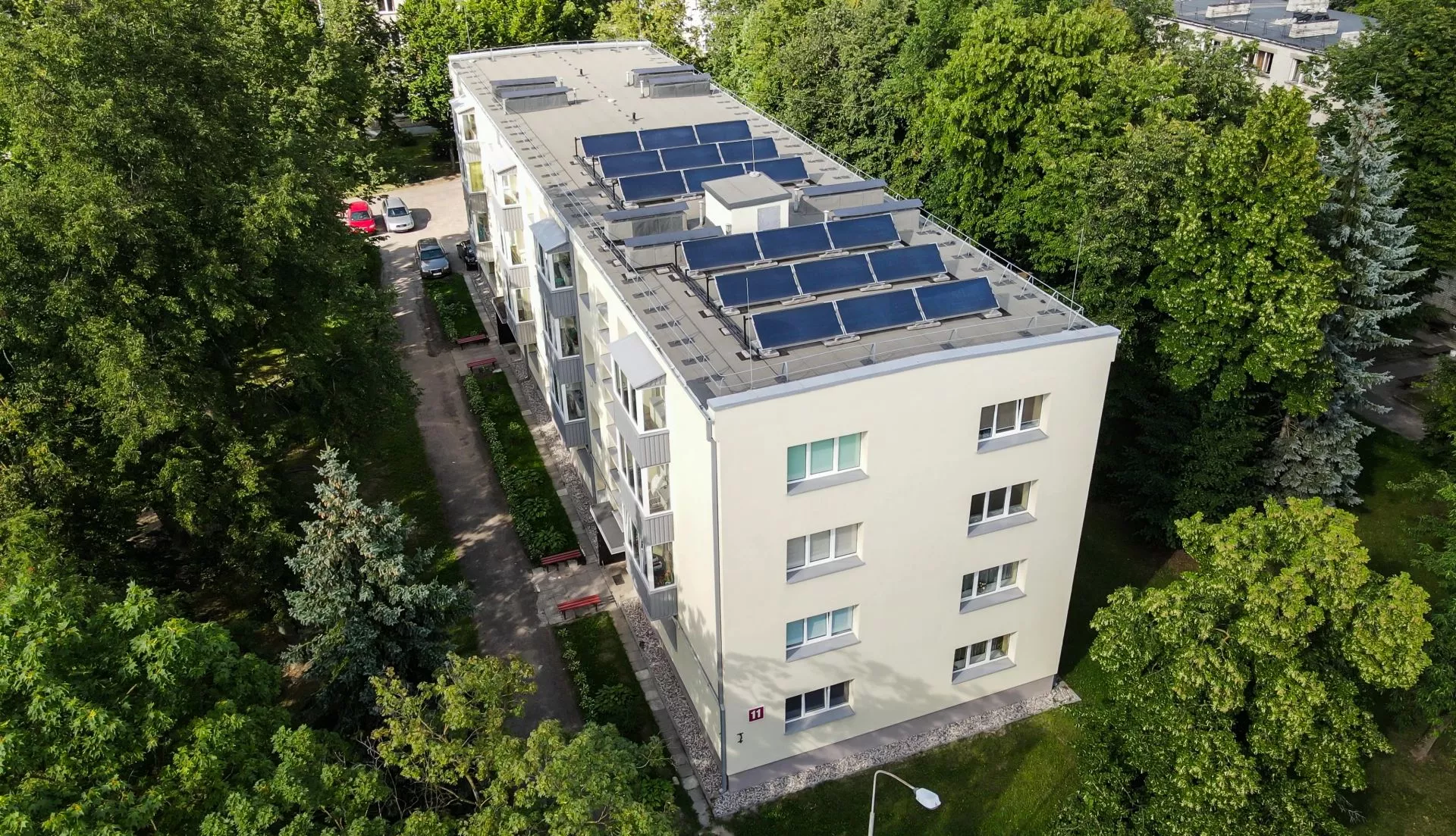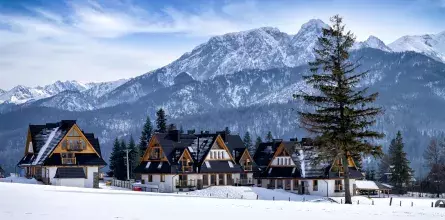Thanks to the Lithuanian Government’s ambitious Energy Efficiency (EE) renovation programme, which uses ERDF financial instruments, more than 3 000 multi-apartment buildings have been renovated so far in the country, while more than 1 000 projects are in various stages of preparation.
Cold and badly isolated homes, a well-known problem in Lithuania for years, are just a bad memory for over 100 000 families who can now enjoy the new comfort level of their homes while making 50 to 70% savings on their heating bills.
“Heating bills amount to only EUR 24 per flat during the colder months and hot water and air-conditioning is nearly free of charge during the summer,” says Valius Rudys, the administrator of the multi-apartment community "Pušis". In 2019 the renovation of the building, on Kosmonautų Street in Marijampolé, the seventh-largest city in Lithuania, was named best renovation project of the year 2019 in Lithuania.
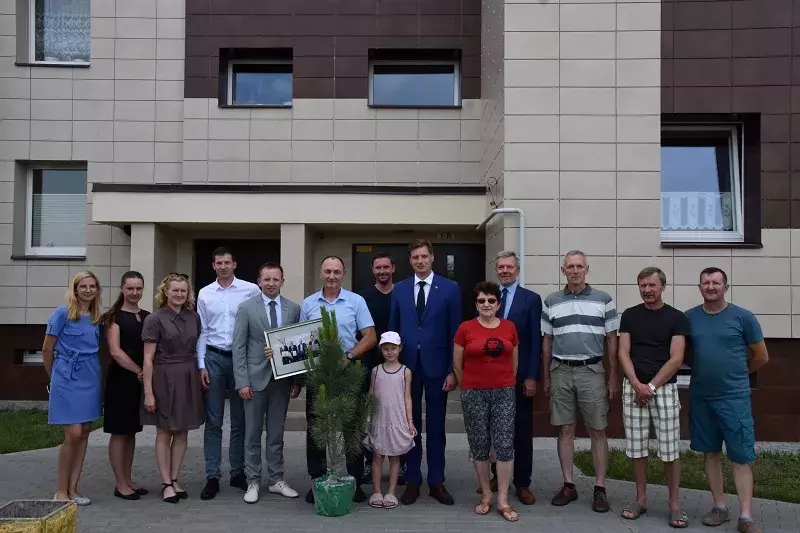
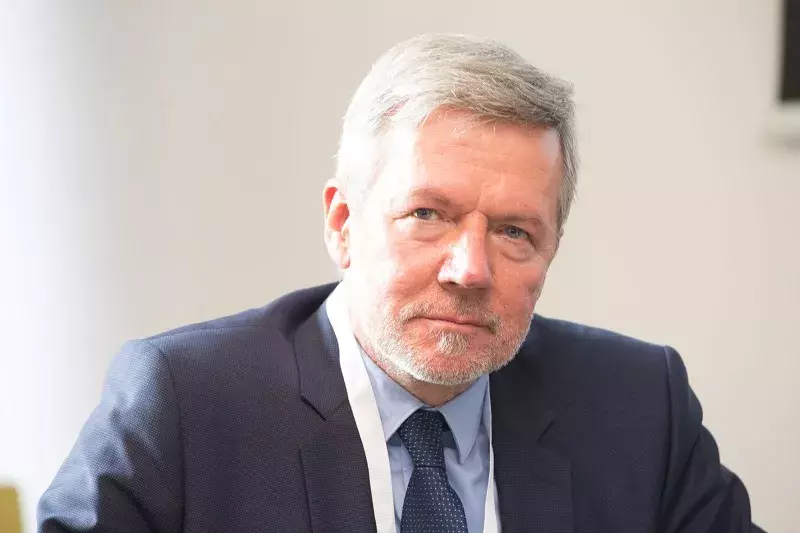
“In Lithuania, 66% of the population live in the 38 000 multi-apartments buildings, mostly built according to former Soviet technical standards. The majority of them need to be renovated,” says Valius Serbenta, Director of the Government Housing Energy Efficiency Agency (BETA) in charge of the Renovation Programme who adds:
“More than 57% of Lithuanian households are not satisfied with their homes, chiefly because of expensive heating costs and insufficient comfort level”.
Valius Serbenta, Director of the Lithuanian Housing Energy Efficiency Agency (BETA)
This Renovation Programme, which started in 2004, is part of the country’s National Energy Plan which is aligned with the European Green Deal and Renovation Wave strategies.
It uses ERDF financial instruments with an aim to mobilise the finance necessary to achieve the target of renovating all multi-apartment buildings to modern energy efficiency standards by 2050. The pace of the programme is already high.
Currently, roughly 500 multi-apartment buildings are renovated each year. This is expected to accelerate significantly in the future so that more than 1 000 buildings per annum are renovated during the period of 2031-2040.
After the renovation, their energy efficiency should increase by more than 60% on average and CO2 emissions should decrease by more than 80%.
By word of mouth
For a long time, residents were afraid that renovation might be a long and complicated process. In 2011, a survey showed that 5.4% of residents in large cities believed in the renovation breakthrough while 93% were sceptical about the processes. Concerns included how much home owners would personally pay for a renovation and if it would be affordable.
Today, however, the situation has changed dramatically as successful projects are delivered, “people see success stories and word of mouth does its work,” notes Serbenta.
According to the latest public opinion poll organised in 2020, 79% of residents now support the renovation of multi-apartment buildings and would renovate their apartment building in appropriate circumstances while 82% of residents would be more likely to renovate their flats in an energy efficiency improvement programme approved and implemented by their municipality.
A single contact
The 54 apartment building at Kosmonautų St. 2 built in 1993 is not among the oldest residential buildings in the city. However, even buildings of this age require maintenance and repair. Residents had already had to repair the roof, and maintain and repair pipelines and staircases. “Working on bits and pieces emptied our pockets and the results were short-lived, so we decided to answer the call so that our building undergoes a comprehensive renovation process”, says one of the residents.
Renovation works include standard features such as: thermal insulation (insulated walls and roof), installation of new windows, glazed balconies, upgrading of heating and ventilation systems and additional high-energy savings solutions such as geothermal and solar heating systems.
Today, the numbers speak for themselves: prior to renovation works, 140.19 kWh of energy was required for heating per square meter; this has now fallen to 24.71 kWh while greenhouse gas emissions have decreased by 94.6 tonnes per year.
“Such environmental benefits would not have been achieved if the residents had refused to install geothermal heating and solar panels,” highlights Inga Kiaulakienė, an EE specialist working at BETA.
According to real estate experts, in larger cities, the valuation of apartments in renovated multi-apartment buildings are 25% to 30% higher when compared to non-renovated buildings. In smaller municipalities, reports indicate that it is nearly impossible to sell premises situated in non-renovated multi-apartment buildings.
Municipalities: a major player
The role of municipalities has been an important factor in the success of the programme. The renovation of apartment block buildings is a huge financial and organisational task.
Although most multi-apartment buildings are privately owned, it is public authorities, and specifically municipalities, that are the key actors in providing assistance and for facilitating renovation activities on behalf of homeowners in apartment block buildings. We notice that residents increasingly associate renovation not only with lower heating costs, but also with modern surroundings (parking lots, children's playgrounds, sidewalks and cycle paths) that are better adapted to everyday needs,” says Povilas Isoda, Mayor of Marijampolé.
“We were encouraged to take part in the programme to reduce energy resource costs and heating prices. Despite complex administrative procedures, one of the biggest advantage of such a programme is that the modernisation covers both apartment buildings and the global living environment.
“Leaders in smaller municipalities indicate that it is nearly impossible to sell residential premises situated in non-renovated multi-apartment buildings”.
Povilas Isoda, Mayor of Marijampolé
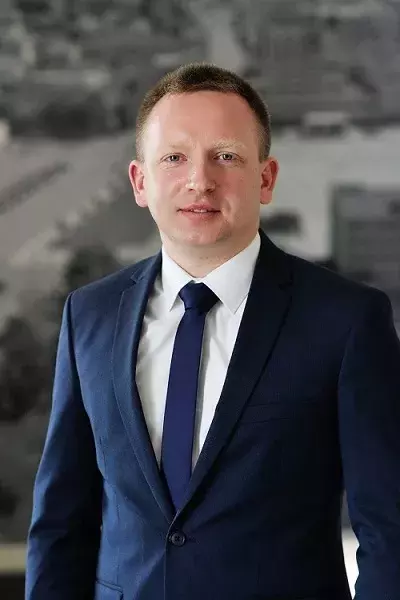
Some delays expected due to COVID-19
The Mayor also addressed the impact of COVID-19 on the programme: “The COVID-19 crisis has had some effects on the implementation of the programme, as it is more difficult to access and carry out works in residents flats. Material production and the global supply chain have also been disrupted and this will have a short-term impact on the renovation process.”
A point of view shared by BETA Director: “The current pandemic and quarantine has not stopped the renovation of multi-apartment buildings - most of the projects are successfully implemented. The problem we have faced in recent months is the decline in the construction capacity, as some third-country workers, a relatively large proportion of whom worked on multi-apartment building renovation projects, returned to their home countries during the pandemic. However, in the long term, the future prospects are positive with more than 1 000 projects in development.”

